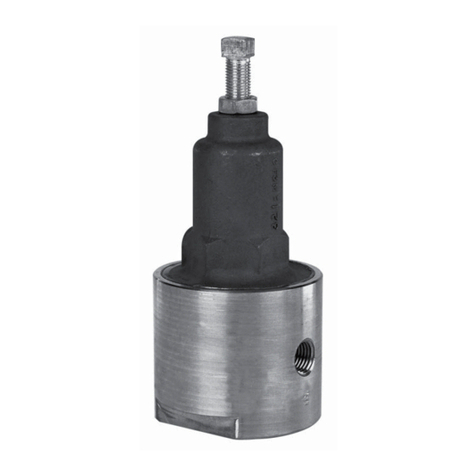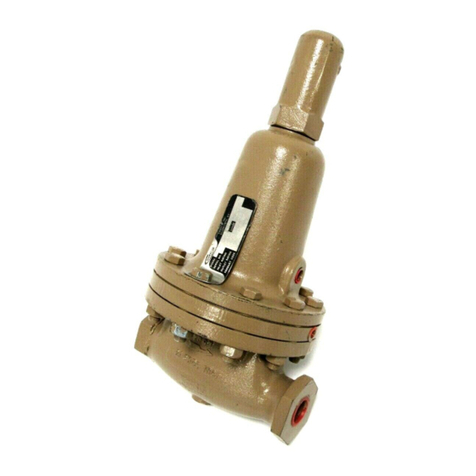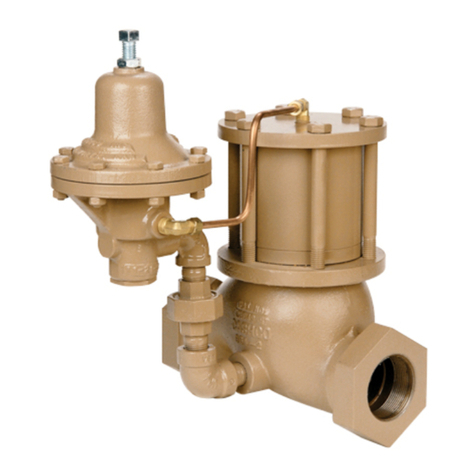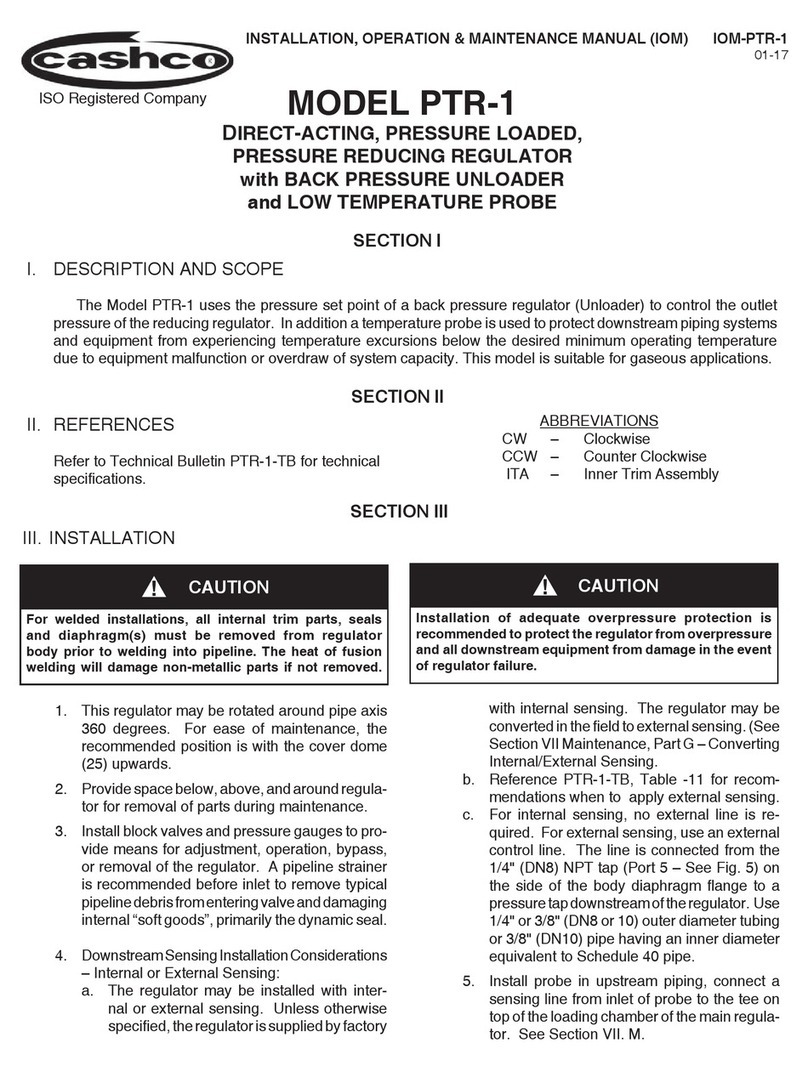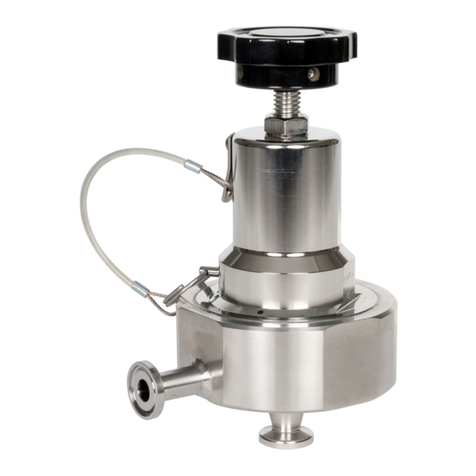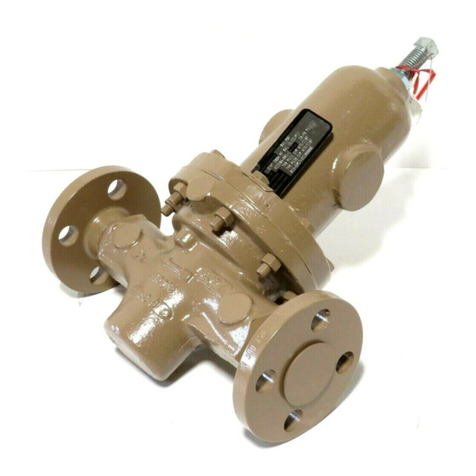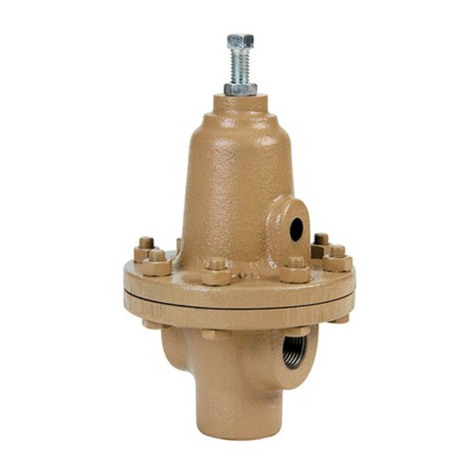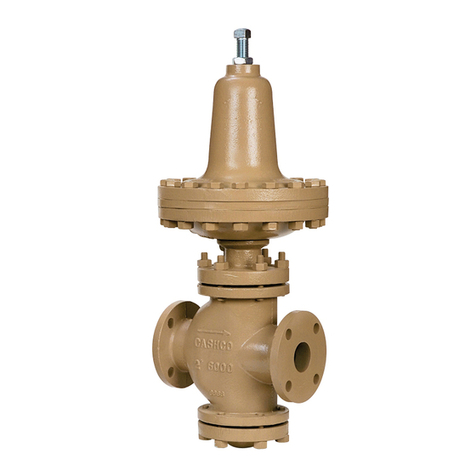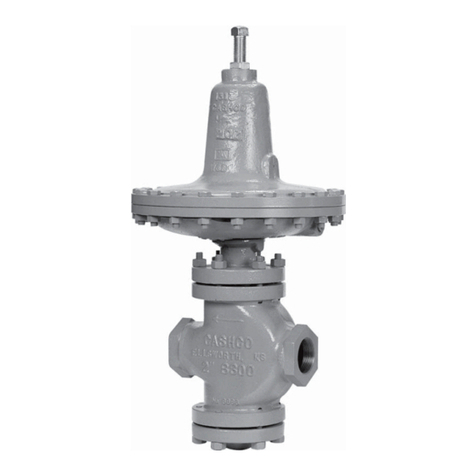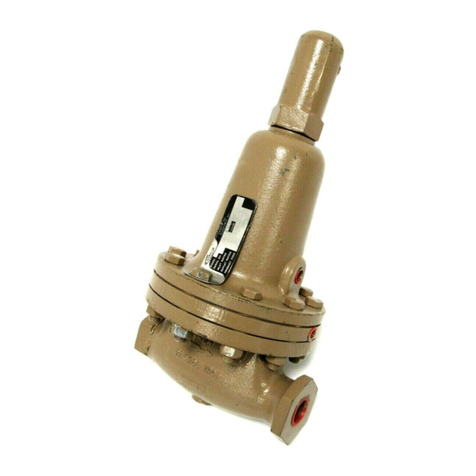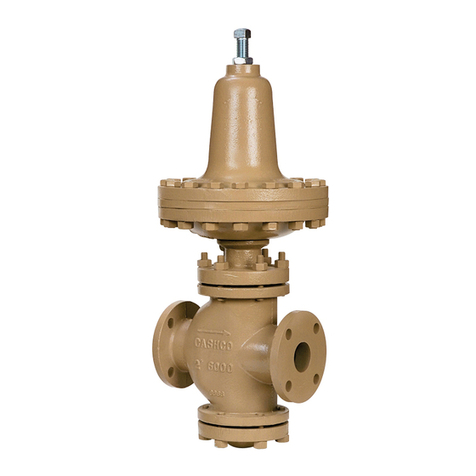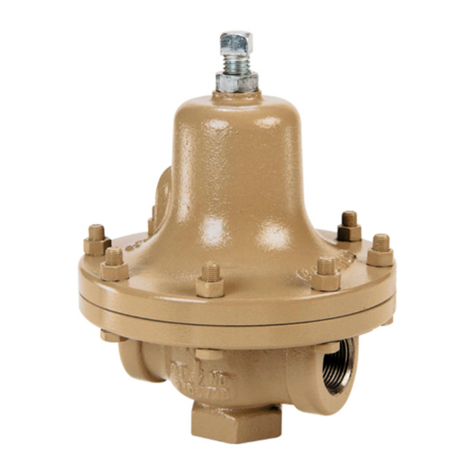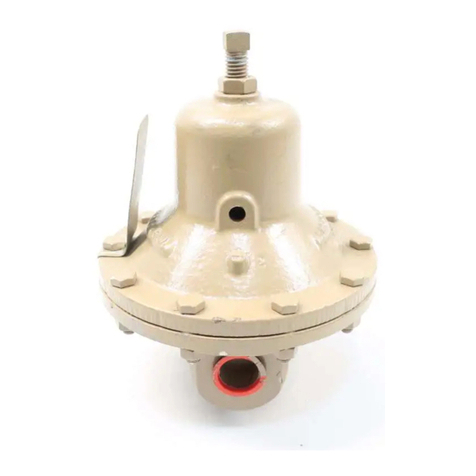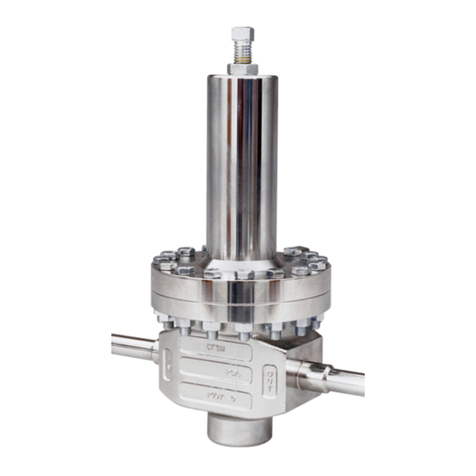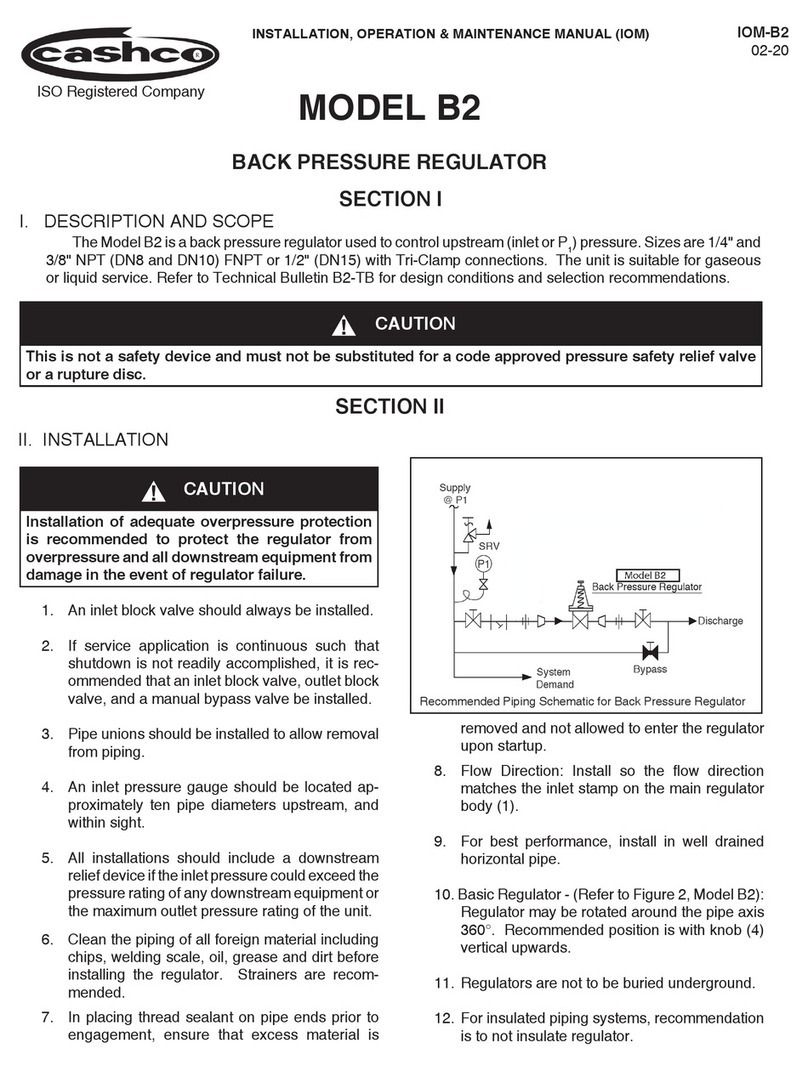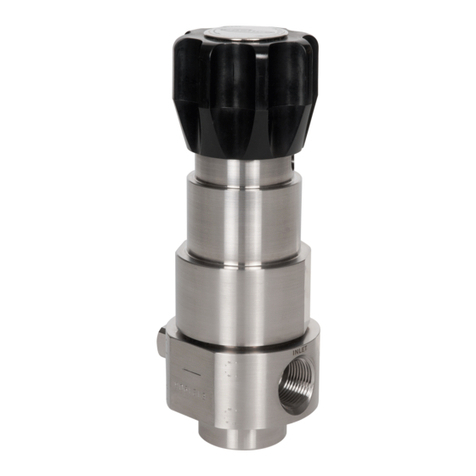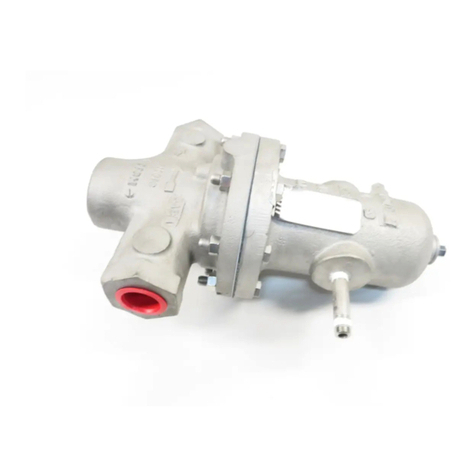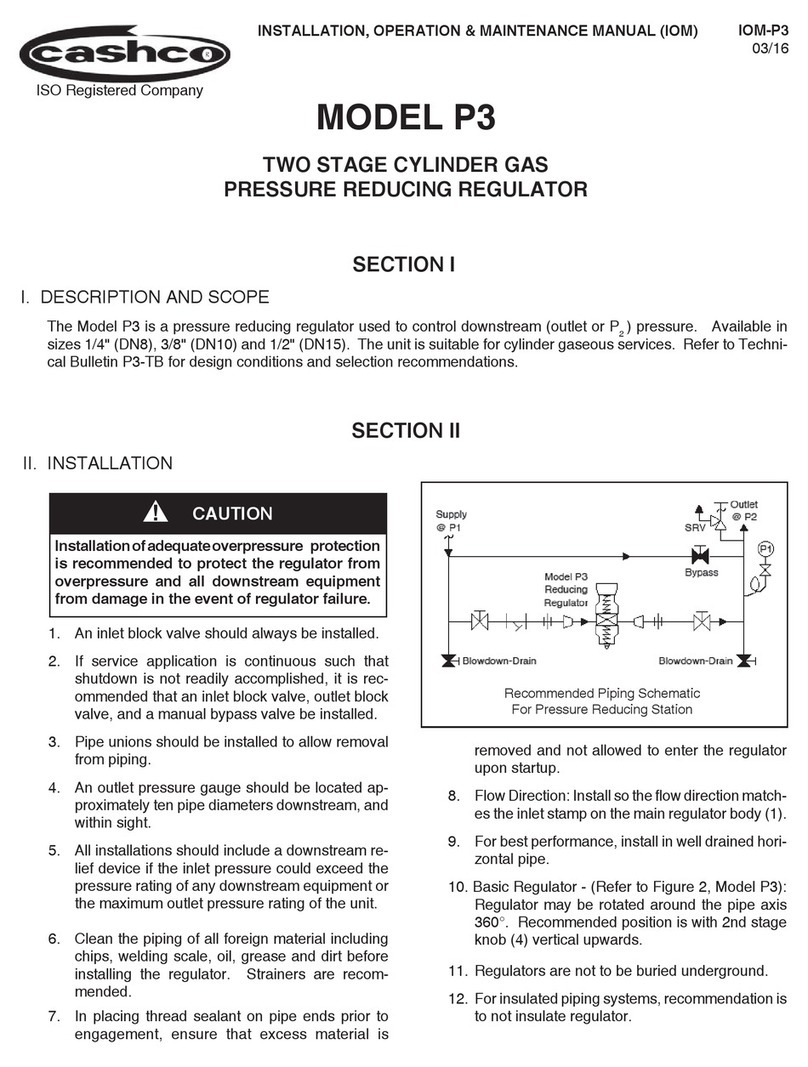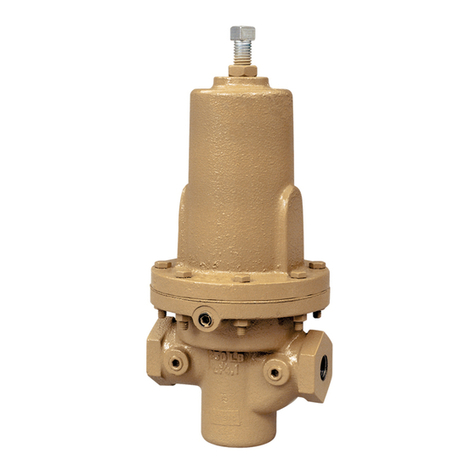
IOM-POSR-16
15. Using needle nose pliers, carefully remove
the screen (6) from the body (1) recess.
16. Inspect body cap (9), screen (6), plug spring (7),
and plug (4.2) for buildup or filming. If parts are
“sticking” together, then improper condensate
corrosion treatment is likely. If scale or other
debris is present, then an upstream strainer
is recommended.
17. Using a 5/8" deepwell socket, rotate valve seat
(4.1) CCW (viewed from above) to removal.
18. Remove seat gasket (8) using a tool with a
bent sharp end. Discard the seat gasket (8).
19. Using a sharp edged tool, clean all gasket
surfaces, and metal-to-metal contact surfaces
of body (1), valve seat (4.1) and body cap (9).
20. Lap plug (4.2) with valve seat (4.1) using
a suitable lapping compound. Do for new
replacement plug (4.2) and seat (4.1) also.
21. Solvent clean all loose internal parts of pilot
valve (PV). Inspect the valve seat (4.1) and
plug (4.2) for wear. Replace the valve seat
(4.1) and plug (4.2) together, even if only one
piece shows significant wear. Solvent clean
body (1).
22. Place body (1) into vise with body cap (9)
opening upwards.
23. Place seat gasket (8) into recess.
24. Put thread lubricant onto valve seat (4.1), and
rotate valve seat (4.1) into threaded recess by
rotating CW (viewed from above) until seat
(4.1) shoulders against body (1).
25. NOTE: Replace screen (6) only if necessary.
Using a 3/4" (19 mm) round bar, form and
interlock the flat screen (6) similar to the
removed screen (6) being replaced. Slide
formed screen (6) off of bar. Insert the screen
into the body recess and over the hex points
of the valve seat (4.1). Ensure concentricity
of positioned screen (6).
26. Place plug spring (7) into recess of plug (4.2),
and position plug’s (4.2) stem-end through the
valve seat (4.1).
27. Place thread lubricant on threads of body cap
(9). Capture protruding plug (4.2) end and plug
spring (7) with body cap (9) recess. Rotate
body cap (9) CW (viewed from above) until
shouldering on body (1). Hammer rap wrench
handle to ensure tightness.
28. Remove body (1) from vise and reposition with
diaphragm flange oriented on top.
29. Place thread sealant/lubricant onto threads
of bellows (11). Insert flat-end of stem
extension (10) into the center of the bellows
(11); chamfered end of stem extension (10)
should be protruding bellows (11). Invert
bellows (11) with stem extension (10) into
body (1) recess. Allow stem extension (10) to
“fall” into threaded opening for bellows (11).
Align threaded portion of bellows (11); rotate
CW (viewed from above) the same number
of engaged revolutions recorded in article 8.
previous, this sub-section.
30. Place diaphragm gasket (13) onto body’s (1)
flange aligning cutouts of gasket (13) with bolt
hole openings.
31. Place diaphragm(s) (12) onto body (1)
positioned concentrically. NOTE: Reassemble
pilot valve (PV) ONLY with the number of
diaphragms (12) disassembled with; the 5–15
psig (0.34–1.03 Barg) spring range uses only
one diaphragm (12).
32. Concentrically position pressure plate (14)
onto diaphragm(s) (12).
33. Set range spring (15) over hub of pressure
plate (14).
34. Place multi-purpose, high temperature grease
into recess of spring button (16) where
adjusting screw (19) bears. Place spring button
(16) over top-end of range spring (15) with
greased recess on top side.
35. Clean threads of diaphragm bolting (17) (18).
Place thread lubricant on bolts (17). Engage
two sets of bolting (17) (18) for ease in rotation;
disengage.
36. Placethetwo bolts (17) of above, approximately
180° across through body (1) diaphragm
flange from underneath side. Hold bolts (17)
with fingers of one hand to keep from falling
downwards.
37. Set spring chamber (2) down over the two
protruding bolts (17), aligning the matchmarks
of article 3. previous, this sub-section.
38. Place the two nuts (18) onto bolts (17) of
above, and finger-tighten.
39. Place remaining bolts (17) through spring
chamber (2) bolt hole openings. Engage all
